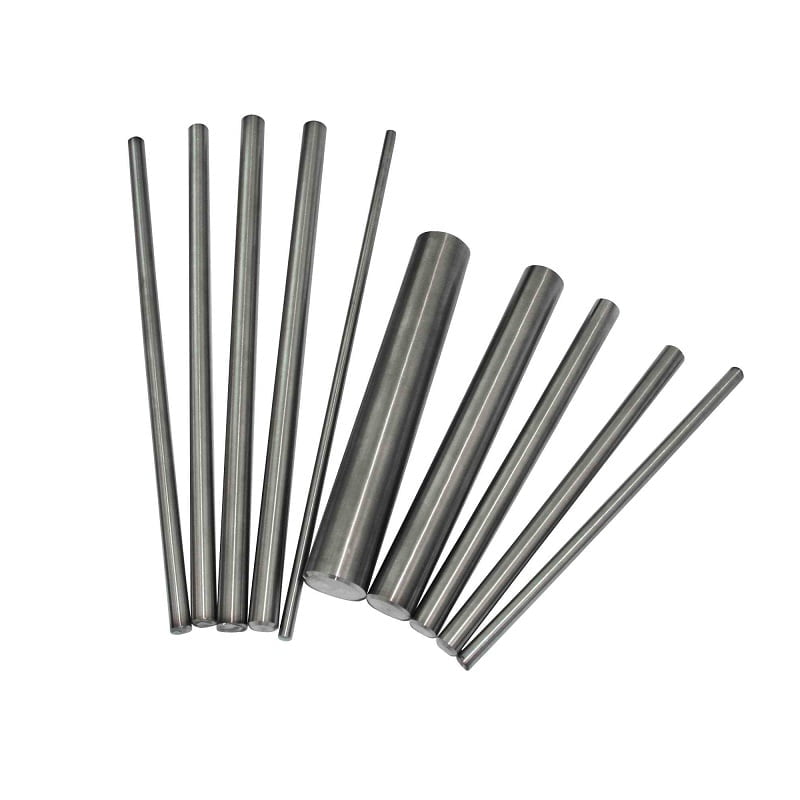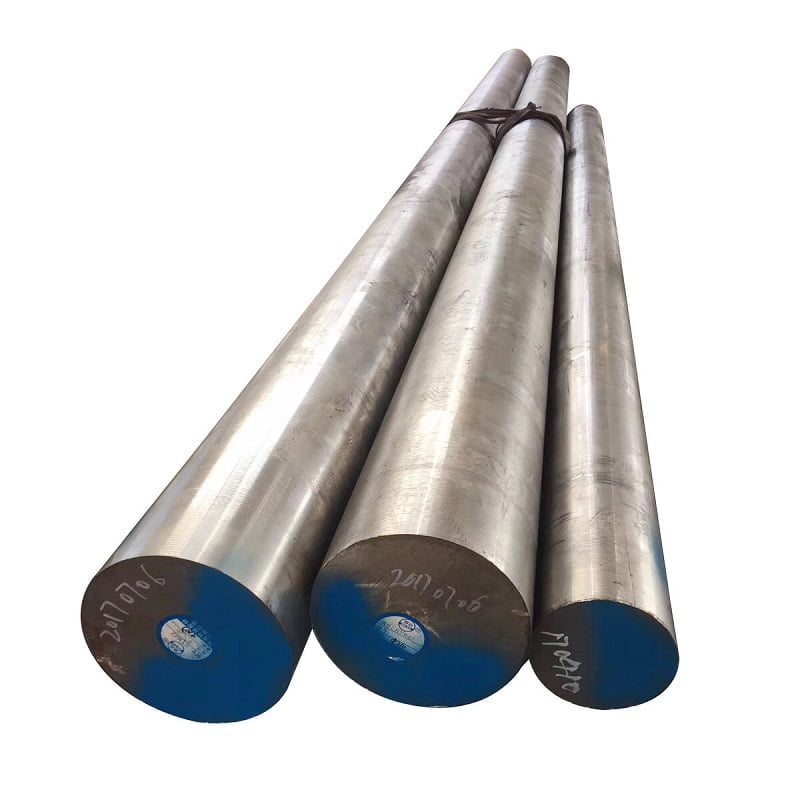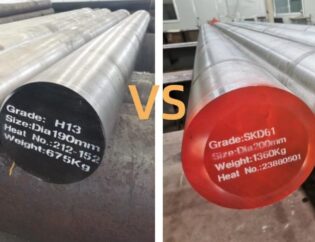
Gatunki stalowe są niezbędne dla różnych zastosowań inżynierskich i produkcyjnych, przy czym każdy typ oferuje unikalne właściwości, które sprawiają, że jest odpowiedni do określonych zastosowań. To porównanie bada stal 12L14 i 4140, aby podkreślić ich różnice w składach, właściwościach mechanicznych, zastosowaniach, możliwościach obróbki cieplnej, spawaniu i kosztach.
Przegląd stali 12L14
12L14 to stal o niskiej zawartości węglowej znana z doskonałej maszyny. Jest powszechnie stosowany w branżach, w których precyzyjne obróbka ma kluczowe znaczenie dla produkcji wysokiej jakości komponentów.
Skład chemiczny stali 12L14
Skład chemiczny 12L14 jest niezbędny ze względu na jego machinację i ogólną wydajność. Typowy skład jest następujący:
| Element | Skład (%) |
|---|---|
| Węgiel (C) | ~0,12% |
| Mangan (Mn) | ~0,60% |
| Fosfor (P) | ~0,04% |
| Siarka (S) | ~0,26% |
| Ołów (Pb) | ~0,15% |
Ołów jest dodawany w celu zwiększenia maszyny, dzięki czemu ta stalowa ocena jest szczególnie przyjazna dla precyzyjnych aplikacji do obróbki.
Właściwości mechaniczne stali 12L14
Właściwości mechaniczne 12L14 odgrywają kluczową rolę w jego zastosowaniach. Oto jego kluczowe właściwości:
| Nieruchomość | Wartość |
|---|---|
| Wytrzymałość na rozciąganie | 58 000–75 000 psi |
| Siła plonowania | Około 38 000 psi |
| Twardość | Około 85 HRB |
| Obrabialność | Doskonały |
| Plastyczność | Dobre do zastosowań o niskim lub umiarkowanym stresie |
Zastosowania stali 12L14
Ze względu na wyjątkową maszynę 12L14 jest powszechnie stosowany w aplikacjach wymagających precyzyjnej obróbki. Typowe zastosowania obejmują:
| Typ aplikacji | Opis |
|---|---|
| Precyzyjnie obrobione części | Komponenty wymagające ciasnych tolerancji, takich jak złączki i ciała zaworów. |
| Łączniki | Nadaje się do śrub i śrub ze względu na łatwość obróbki. |
| Przekładnie | Używany do zębów o niższym obciążeniu w różnych maszynach. |
| Komponenty hydrauliczne | Idealny do złączek hydraulicznych i składników o spójnych wymiarach. |

Przegląd stali 4140
4140 Stal to stal ze stopu średnio węglowego znana z siły, twardości i doskonałej odporności na zużycie. Jest często stosowany w zastosowaniach o wysokiej stresce, które wymagają trwałości i wytrzymałości.
Skład chemiczny stali 4140
Skład chemiczny 4140 został zaprojektowany w celu zapewnienia zwiększonej wytrzymałości i odporności. Typowa kompozycja obejmuje:
| Element | Skład (%) |
|---|---|
| Węgiel (C) | 0.38 - 0,43% |
| Mangan (Mn) | 00,60 – 0,90% |
| Chrom (Cr) | 0.80 - 1,10% |
| Molibden (Mo) | 0.15 - 0,25% |
| Fosfor (P) | ≤0,04% |
| Siarka (S) | ≤0,05% |
Dodatkowe elementy stopowe, takie jak chrom i molibdenu, poprawiają twardość stali i odporność na zużycie.
Właściwości mechaniczne 4140 stali
4140 Stal wykazuje wyjątkowe właściwości mechaniczne, które dobrze je pożyczają do zastosowań o wysokiej wydajności. Oto jego kluczowe właściwości:
| Nieruchomość | Wartość |
|---|---|
| Wytrzymałość na rozciąganie | 90 000 - 100 000 psi |
| Siła plonowania | Około 60 000 psi |
| Twardość | Do 50 HRC (traktowany ciepłem) |
| Obrabialność | Umiarkowany |
| Plastyczność | Dobre, szczególnie w stanie wyżarzonym |
Zastosowania stali 4140
Ze względu na swoją siłę i wytrzymałość 4140 stal jest szeroko stosowana w zastosowaniach wymagających wysokiej wydajności i trwałości. Typowe zastosowania obejmują:
| Typ aplikacji | Opis |
|---|---|
| Wały | Stosowane w komponentach transmisji mocy, które wymagają odporności na zużycie i deformację. |
| Przekładnie | Nadaje się do zastosowań o wysokim obciążeniu, często oczyszczane ciepło dla dodatkowej wytrzymałości. |
| Wały korbowe | Powszechnie stosowane w aplikacjach motoryzacyjnych ze względu na jego wytrzymałość i odporność na zmęczenie. |
| Elementy złączne o dużej wytrzymałości | Idealny do zastosowań wymagających wysokiej wytrzymałości na rozciąganie i trwałości. |
Obrabialność
Maszyna odnosi się do tego, jak łatwo można wyciąć i kształtować materiał podczas procesów obróbki, co znacząco wpływa na wydajność produkcji.
| Funkcja | 12L14 Stal | 4140 STAL |
|---|---|---|
| Łatwość obróbki | Doskonały; Zawartość ołowiu poprawia cięcie i zmniejsza zużycie narzędzi. | Umiarkowany; Wymaga precyzyjnych technik obróbki i może skutkować zwiększonym zużyciem narzędzi. |
Łatwość obróbki w 12L14 oznacza, że często jest preferowana do produkcji małych części, a 4140 może wymagać większej opieki i specjalnych narzędzi.
Możliwości obróbki cieplnej
Obróbka cieplna odgrywa kluczową rolę w zwiększaniu właściwości stali, szczególnie w zastosowaniach wymagających wysokiej siły i twardości.
| Funkcja | 12L14 Stal | 4140 STAL |
|---|---|---|
| Obróbka cieplna | Ogólnie nie obróbki cieplne; stosowane w stanie, w którym zmierzono w celu zachowania maszyny. | Wysoce obróbki cieplne, pozwalając na procesy takie jak wygaszanie i temperowanie, aby znacznie poprawić twardość i siłę. |
Zdolność lat 4140 do obróbki cieplnej pozwala jej wyróżniać się w zastosowaniach, w których wysoka wytrzymałość i odporność na zużycie ma kluczowe znaczenie.
Spawalność
Spawalność jest istotną cechą, która wpływa na to, jak łatwo można spać różne stopnie stalowe podczas wytwarzania.
| Funkcja | 12L14 Stal | 4140 STAL |
|---|---|---|
| Charakterystyka spawania | Nie zalecane do spawania z powodu ołowiu, które może zagrozić integralności spoiny. | Można spawać, chociaż podgrzewanie jest często konieczne, aby zminimalizować pękanie; Należy zastosować odpowiednie techniki spawania i wypełniacze. |
Brak spawania w 12L14 może ograniczyć swoje zastosowania w niektórych scenariuszach projektowych, w których wymagane jest spawanie, a 4140 oferuje większą wszechstronność w produkcji.
Koszt i dostępność
Koszt i dostępność mogą być istotnymi czynnikami wpływającymi na wybór stali w procesach produkcyjnych.
| Funkcja | 12L14 Stal | 4140 STAL |
|---|---|---|
| Koszt | Zazwyczaj droższe ze względu na elementy ołowiu i stopu, chociaż oszczędności mogą wynikać z jego maszyny. | Ogólnie tańsze niż 12L14; Dostępne w różnych formach i ma tendencję do szerokiej obecności rynku ze względu na jego wszechstronność. |
Dostępność 4140 w różnych rozmiarach i kształtach sprawia, że jest to atrakcyjny wybór dla różnych aplikacji inżynierskich.
Podsumowanie i wnioski
Porównanie stali 12L14 i 4140 ujawnia znaczące różnice, które sprawiają, że każdy z nich odpowiedni do odrębnych zastosowań.
| Funkcja | 12L14 Stal | 4140 STAL |
|---|---|---|
| Podstawowe atrybuty | Doskonała maszyna, niski węgiel | Wysoka wytrzymałość, obróbka cieplna, stop średniej węgier |
| Skład chemiczny | Niski węgiel; Ołów poprawia maszyna | Średni węgiel; Chrom i molibdenu poprawia wytrzymałość |
| Właściwości mechaniczne | Umiarkowana granica rozciągania i plastyczności | Wysoka wytrzymałość na rozciąganie i twardość |
| Aplikacje | Części precyzyjne, elementy złączne, elementy hydrauliczne | Wały, przekładnie, elementy samochodowe |
| Obrabialność | Doskonały ze względu na zawartość ołowiu | Umiarkowane, potrzebuje technik precyzyjnych |
| Obróbka cieplna | Zwykle nie jest poddawany obróbce cieplnej | Może być poddane obróbce cieplnej w celu ulepszonych właściwości |
| Spawalność | Nie nadaje się do spawania | Można przyspawać odpowiednimi technikami |
| Koszt i dostępność | Wyższe koszty, specjalistyczne materiały do obróbki | Bardziej ekonomiczne, powszechnie dostępne |
Podsumowując, wybór stali między 12L14 a 4140 zależy od określonych wymagań projektu, takich jak priorytetem, czy precyzyjna obróbka lub wysoka wytrzymałość. Każda ocena stalowa ma swoje zalety i ograniczenia, co czyni go niezbędnym dla inżynierów i producentów do oceny ich potrzeb przed wybraniem odpowiedniego materiału. Jeśli masz dalsze pytania lub potrzebujesz dodatkowych informacji, możesz zapytać!

